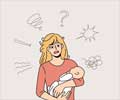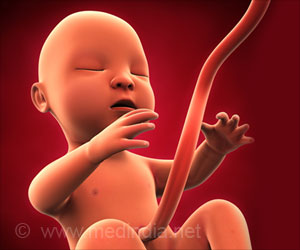
‘Treating postpartum depression in babies with cognitive behavioral therapy can improve the mothers’ ability to soothe their distressed babies.’
Tweet it Now
The story is also different for new mothers who experience postpartum depression (PPD), which affects up to 20% of people who give birth.Role Of Postpartum Depression In Interaction With Child
However, it is not known how mothers’ soothing signals are transmitted to their baby, how postpartum depression disrupts this process, or if treating depressed mothers can alter these signals.To investigate this, researchers worked with two sets of mother-infant pairs: in the control group, both mothers and babies were healthy; in the other group, the mothers had received a PPD diagnosis within a year of giving birth.
The study’s method subjected the mothers and babies to three phases of interaction. In the play phase, mothers played with their infants as they normally would (e.g., singing, talking, touching).
In the still-face phase, mothers were instructed not to touch or speak to their babies and to maintain eye contact and adopt an expressionless “poker” face, so that the infant would become distressed and agitated.
Advertisement
Throughout these phases, the team monitored both mother and baby for a heart-rate variability measure called respiratory sinus arrhythmia (RSA), which is a known indicator of one’s emotional state.
Advertisement
The groups were tested in this way twice: once to establish a baseline and then a second time, several weeks later, after the mothers with PPD had received and been observed to benefit from, a course of cognitive-behavioral therapy (CBT), improving their affective state.
In the healthy control group, they found that mothers’ heart-rate changes, as measured through RSA readings, preceded those of infants, suggesting that they were leading the soothing dance.
Conversely, in the PPD-afflicted group, it was the infants whose physiological signals led the dance. But after CBT treatment, the PPD mothers’ physiological signaling improved such that they led the back-and-forth, just as the healthy mothers had.
This study published in the Journal of Psychopathology and Clinical Science demonstrates that synchronized physiology between mothers and babies plays a role in soothing distressed infants and that treating PPD with CBT can improve the synchronicity patterns and thereby augment mothers’ ability to soothe their distressed babies.
It also calls for future studies to test whether improvement in the RSA feedback loop’s soothing effects can be casually linked to CBT treatment of PPD-suffering mothers. Researchers e hope that showing causality and efficacy, can increase the idea that these programs can benefit them.
Source-Medindia









